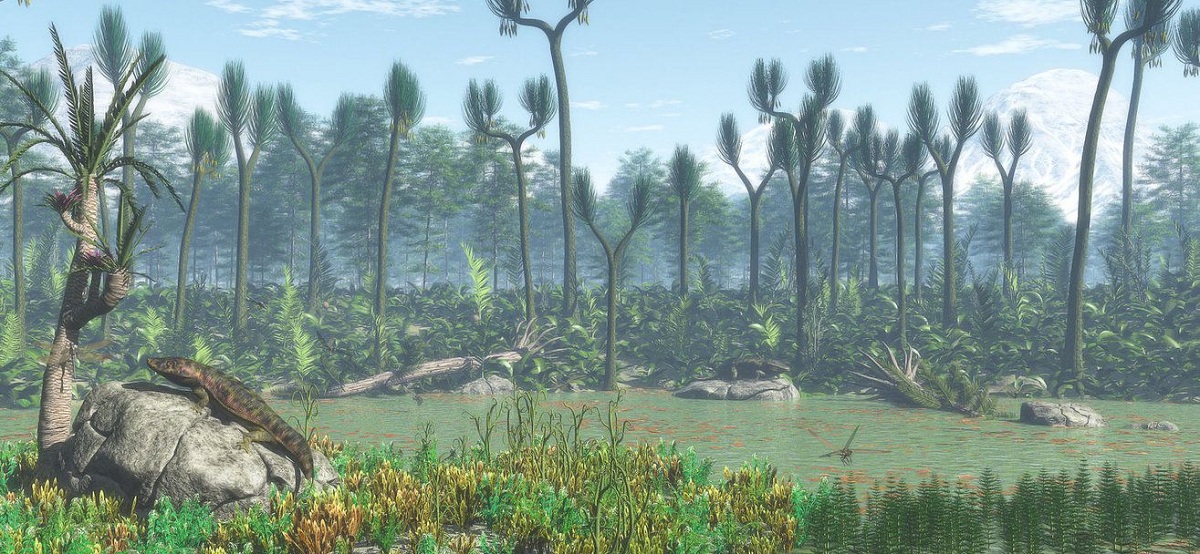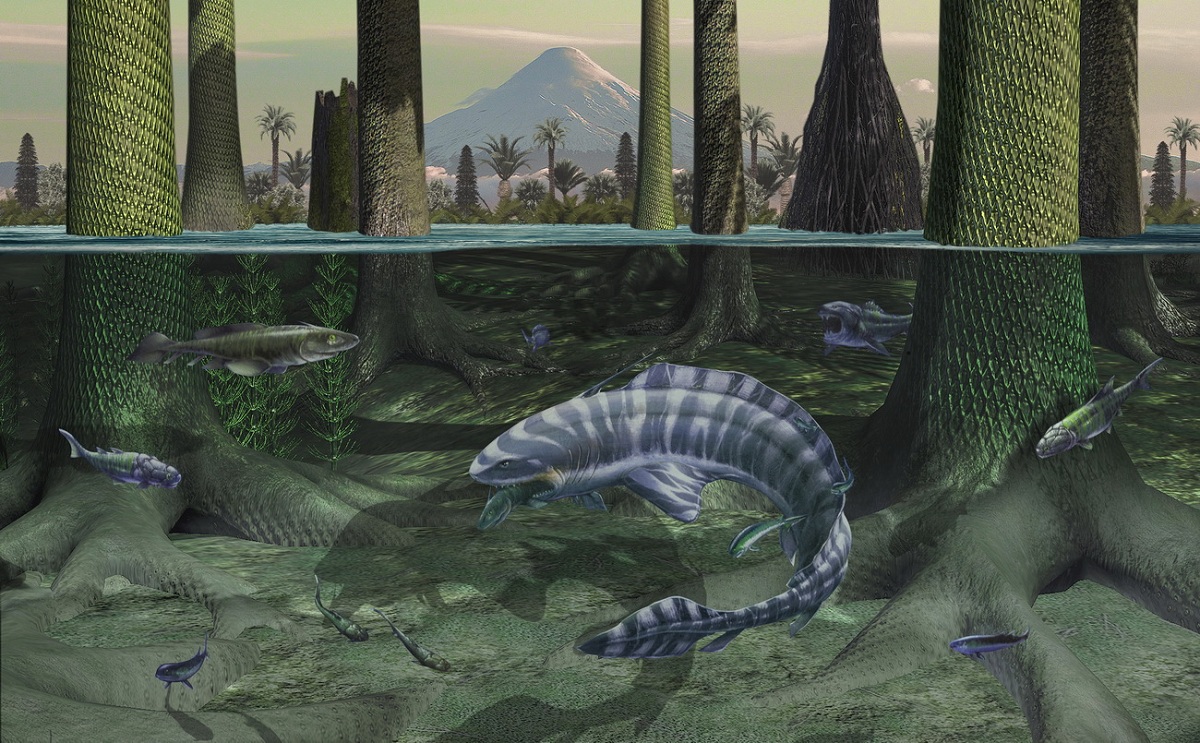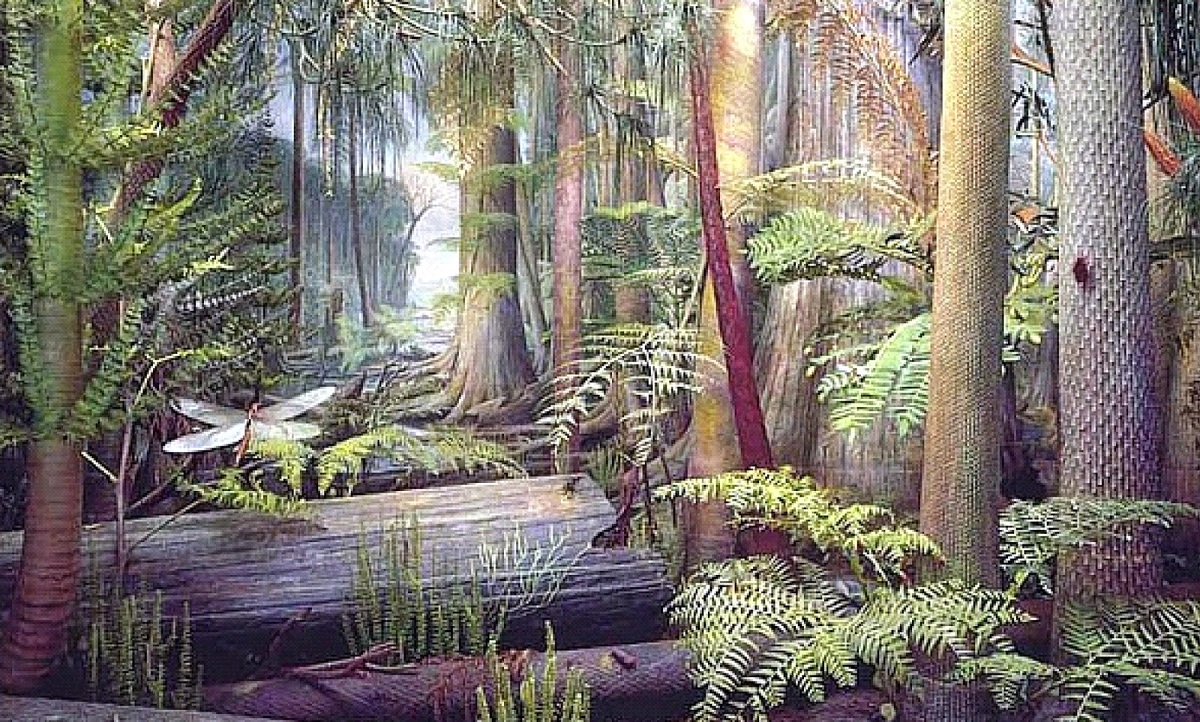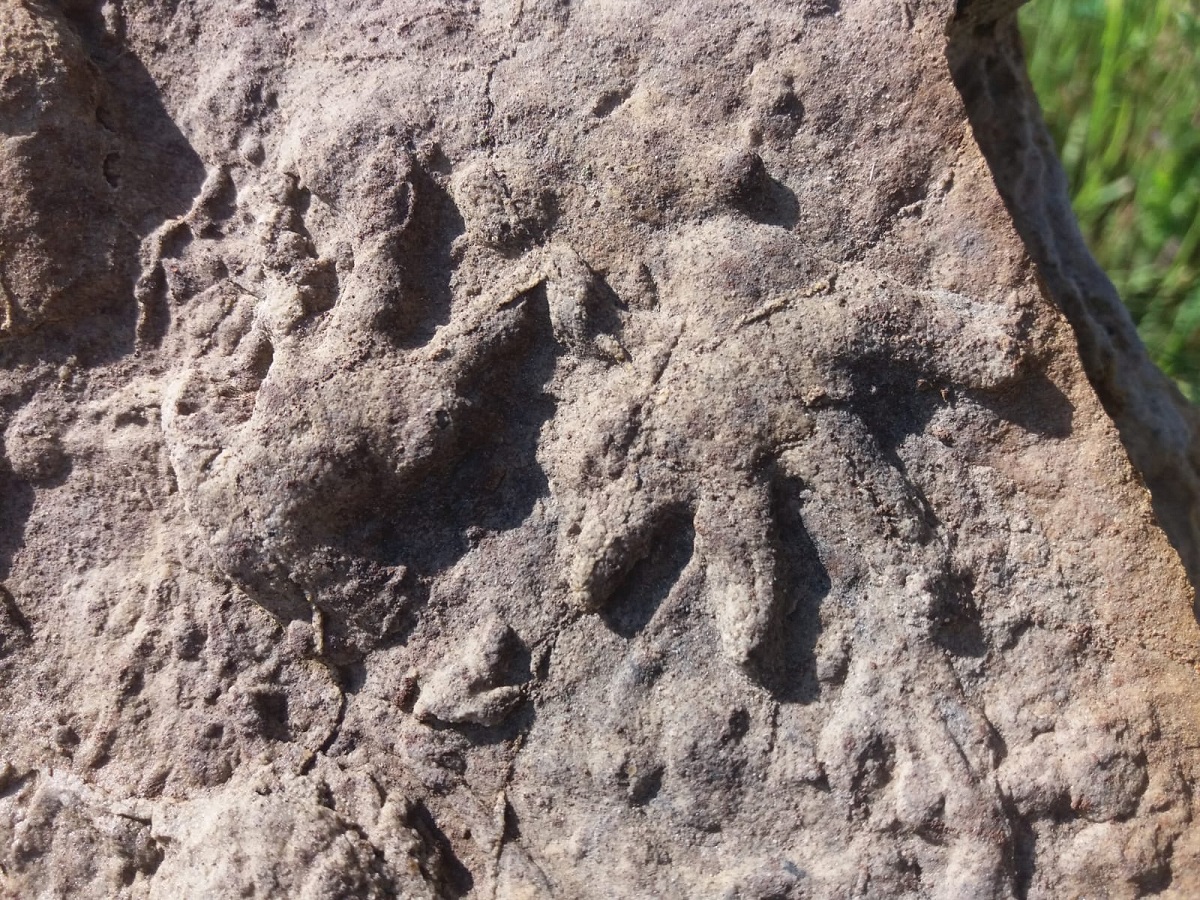
Within the Paleozoic era there are 6 different periods. One of them is the carboniferous period. In this period, a large number of carbon deposits have been found in the fossil record, hence its name. All this was due to the large amount of forests that were buried and that originated the carbon strata. It is one of the reasons why Carboniferous fauna it is very important worldwide.
Therefore, in this article we are going to analyze the importance of the Carboniferous fauna and its main characteristics.
Carboniferous period

This period was one of those that harbors one of the momentous changes at the level of animals and plants. One of the reasons is that it indicates that amphibians moved away from the water in order to conquer terrestrial ecosystems. This was due to the development of the amniota egg. The Carboniferous period lasts for approximately 60 million years. It began about 359 million years ago and ended about 299 million years ago.
During this period of time great geological activity was experienced. In it, the tectonic plates had a movement caused by the very powerful continental drift. These movements caused some of the land masses to collide and originate mountain ranges.
One of the highlights of the Carboniferous period is the appearance of the amniotic egg and the first reptiles. Reptiles are thought to have evolved from existing amphibians. Thanks to the emergence of the amniote egg, an egg that is protected and isolated from the external environment, helped the embryos to be protected and will improve evolution. This event produced something revolutionary in the group of reptiles since they could begin to conquer the terrestrial environment. Evolved thanks to the adaptation of not having to return to the water to lay their eggs.
During this period there were great changes in the oceans and the continental masses. This tectonic activity caused many continental masses to move to form the super continent known as Pangea. As for the climate, during the Carboniferous period there was a fairly warm climate. This hot and humid climate caused a large amount of vegetation to spread throughout the planet. It allowed the formation of forests and the development and diversification of other forms of life. Some specialists point out that the ambient temperature was around 20 degrees. The soils were highly humid and many swamps formed in some regions.
Flora and vegetation

As for the flora of the Carboniferous, there was a diversification of existing life forms and it was due to favorable environmental conditions. This hot and humid climate was ideal for the permanent development of plants. These plants that stood out the most were the Pteridospermatophyta, Lepidodendrales, Cordaitales, equisetales and Lycopodiales.
The first group was known as the Seed Ferns. It is known that they were true seed-producing plants and the name of ferns is because it has a similar shape to the current ones. It grew very close to the ground and also formed a dense tangle of vegetation that retained moisture.
The lepidodendrales were a group of plants that became extinct at the beginning of the later period. They reached their maximum splendor during the Carboniferous and they reached 30 meters in height. The cordaitales were a type of plants that became extinct during the mass extinction of the Triassic period y Jurassic. Its stem presented primary and secondary xylem. Its leaves were quite large, reaching up to a meter in length.
Carboniferous fauna

Now we will analyze the fauna of the Carboniferous. During this period the fauna became quite diverse. Thanks to favorable climatic and environmental conditions, almost all species had a gap in development. The humid and warm environment added to the great availability of atmospheric oxygen contributed to the development of a large number of species. Among the animals that Most prominent in the fauna of the Carboniferous are amphibians, insects and marine animals. At the end of this period the first reptiles made their appearance.
Let's analyze the arthropods first. During the Carboniferous period there were numerous large specimens of arthropods. These animals have been the subject of numerous studies by specialists. The large size of these animals is thought to have been due to high concentrations of atmospheric oxygen.
arthoropleura
It is an arthropod known as a giant centipede. It is the most famous arthropod of this entire period. And is that it reached 3 meters in length and belonged to the group of myriapods. It was a very short animal and was only about half a meter tall. It was made up of segments articulated with each other and covered by plates.
Arachnids
Within the group of arachnids from the Carboniferous period, the species of spider known as Mesothelae stands out. Its main characteristic was its large size, which was approximately that of a human head. Their diet was fully carnivorous and they fed on small animals.
Giant dragonflies
In this period there were flying insects very similar to today's dragonflies. They were large animals and used to measure approximately 70 centimeters from end to end. They have been recognized as the largest insects that have ever inhabited this planet. Their diet was carnivorous and they were predators of smaller animals such as amphibians and insects.
Carboniferous fauna: amphibians
As we mentioned at the beginning of the article, amphibians were the group of animals that diversified the most and underwent changes. It is worth mentioning a decrease in body size as well as the adoption of pulmonary respiration. The first amphibians to appear had a body configuration similar to that of salamanders.
There were various types of amphibians. Pederpes were tetrapod amphibians with a smaller body and short, robust limbs. The crassigyrinus were amphibians with a slightly weirder appearance. Its front limbs were very underdeveloped so that it could not support the animal's body. It was a tetrapod that had a length of approximately two meters and a weight of approximately 80 kg.
I hope that with this information you can learn more about the fauna of the Carboniferous.